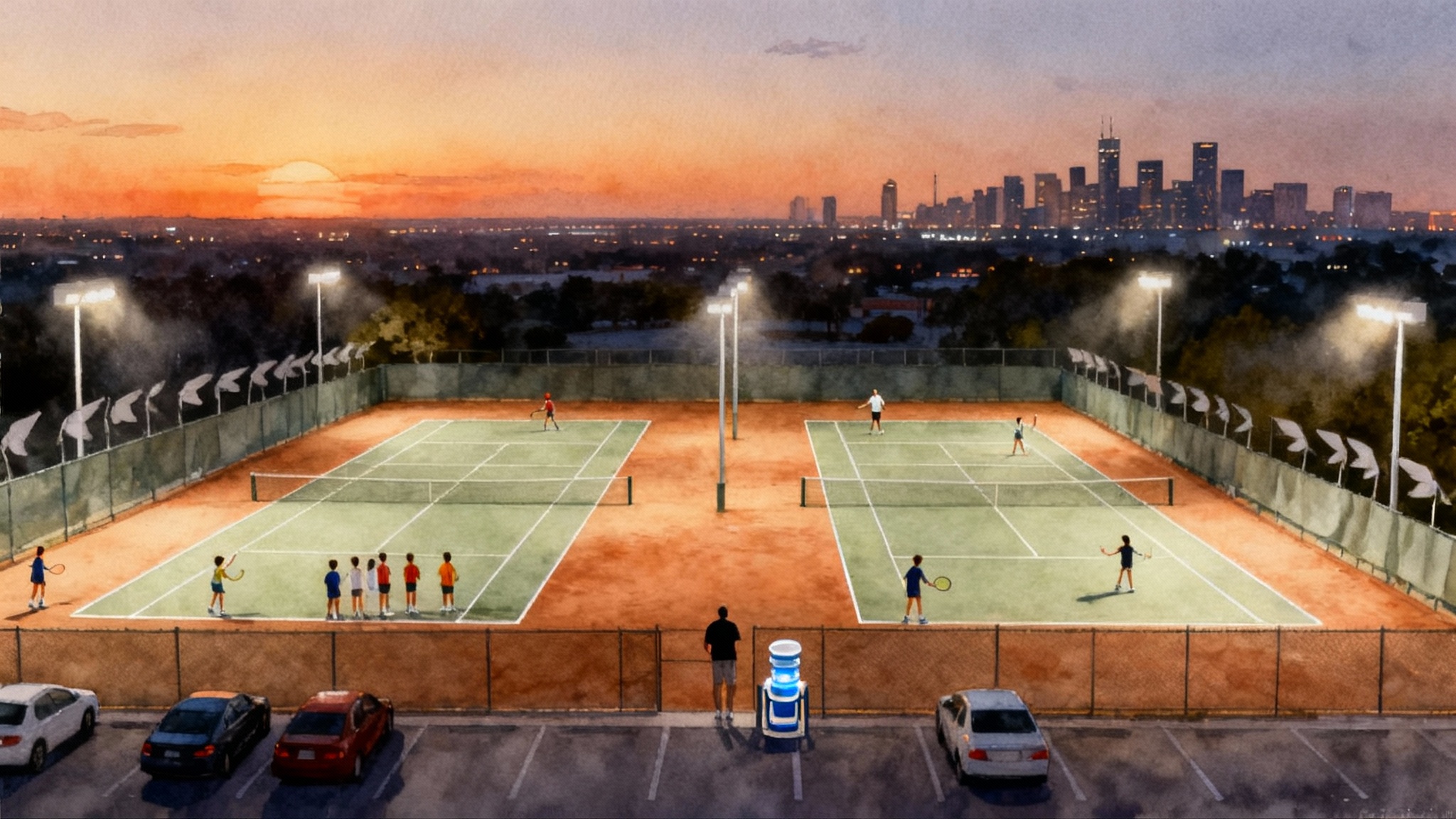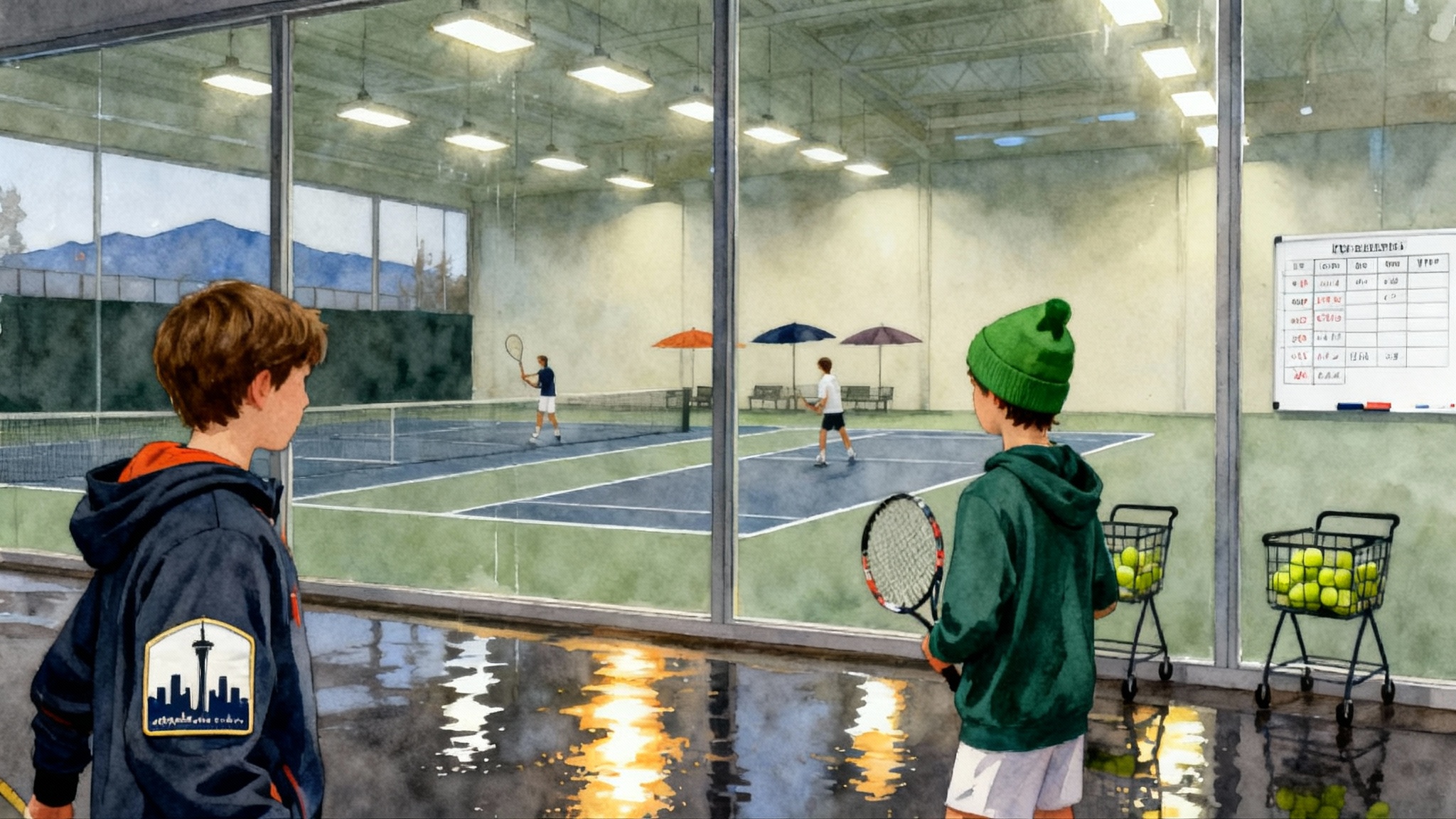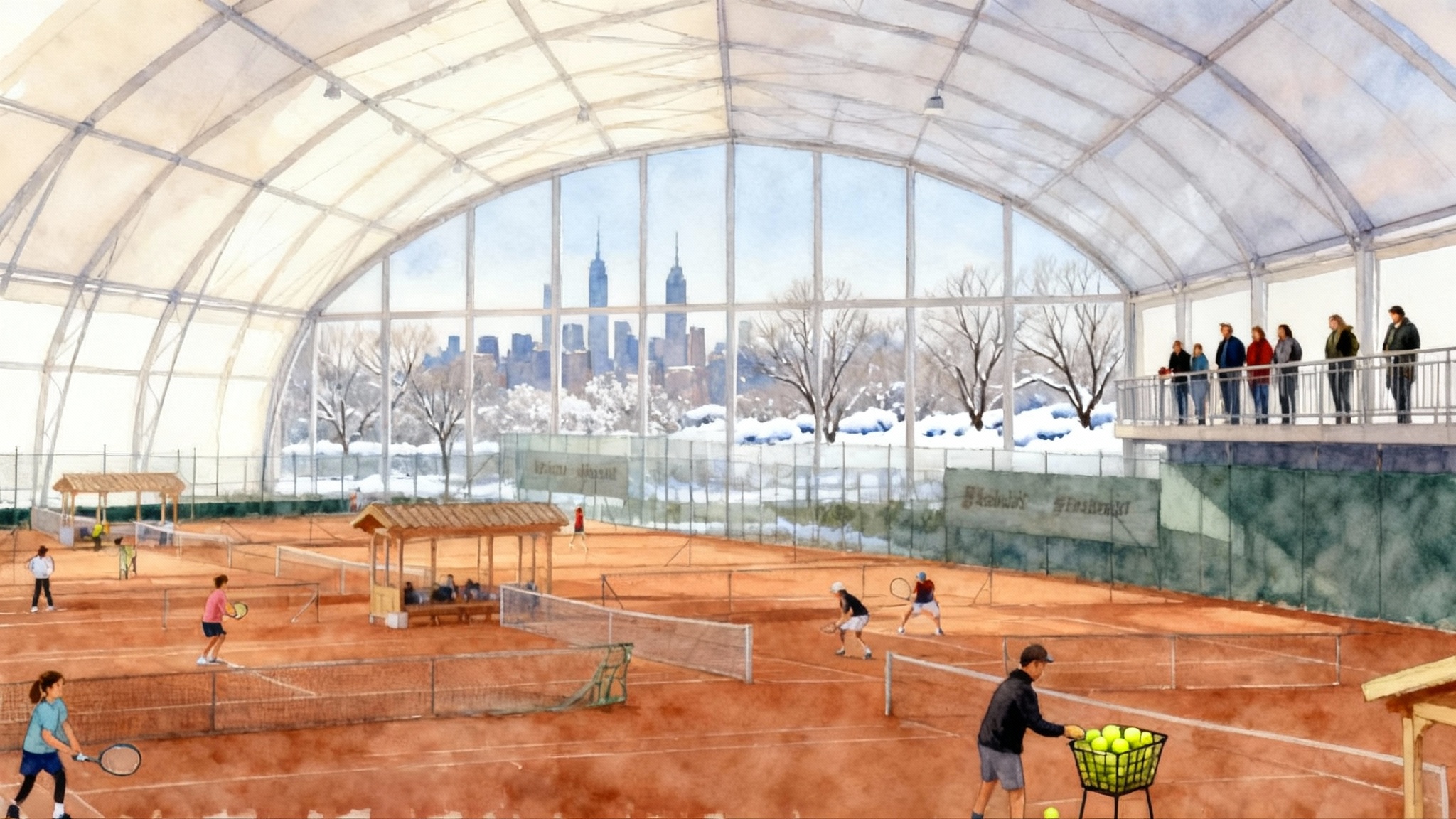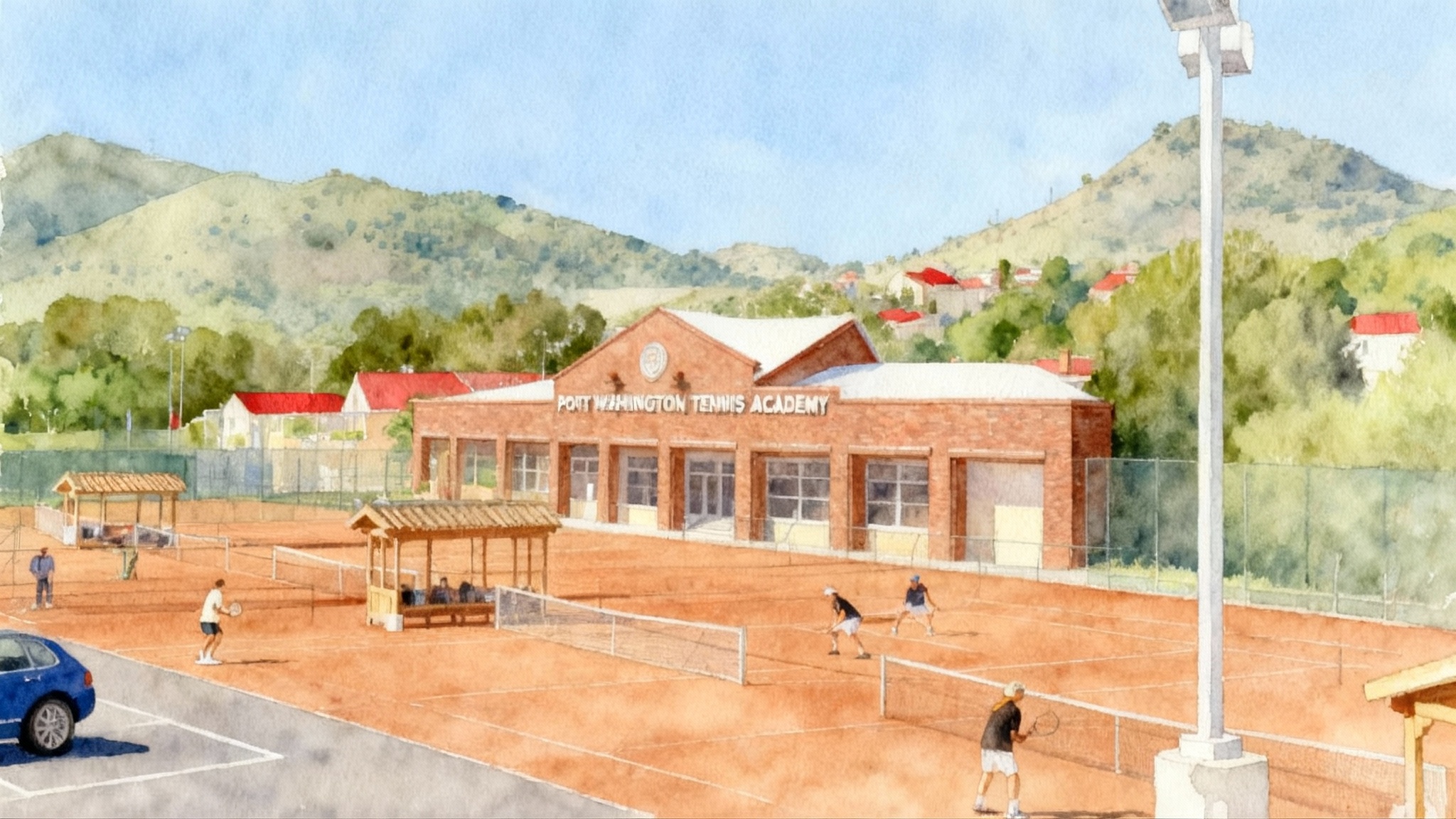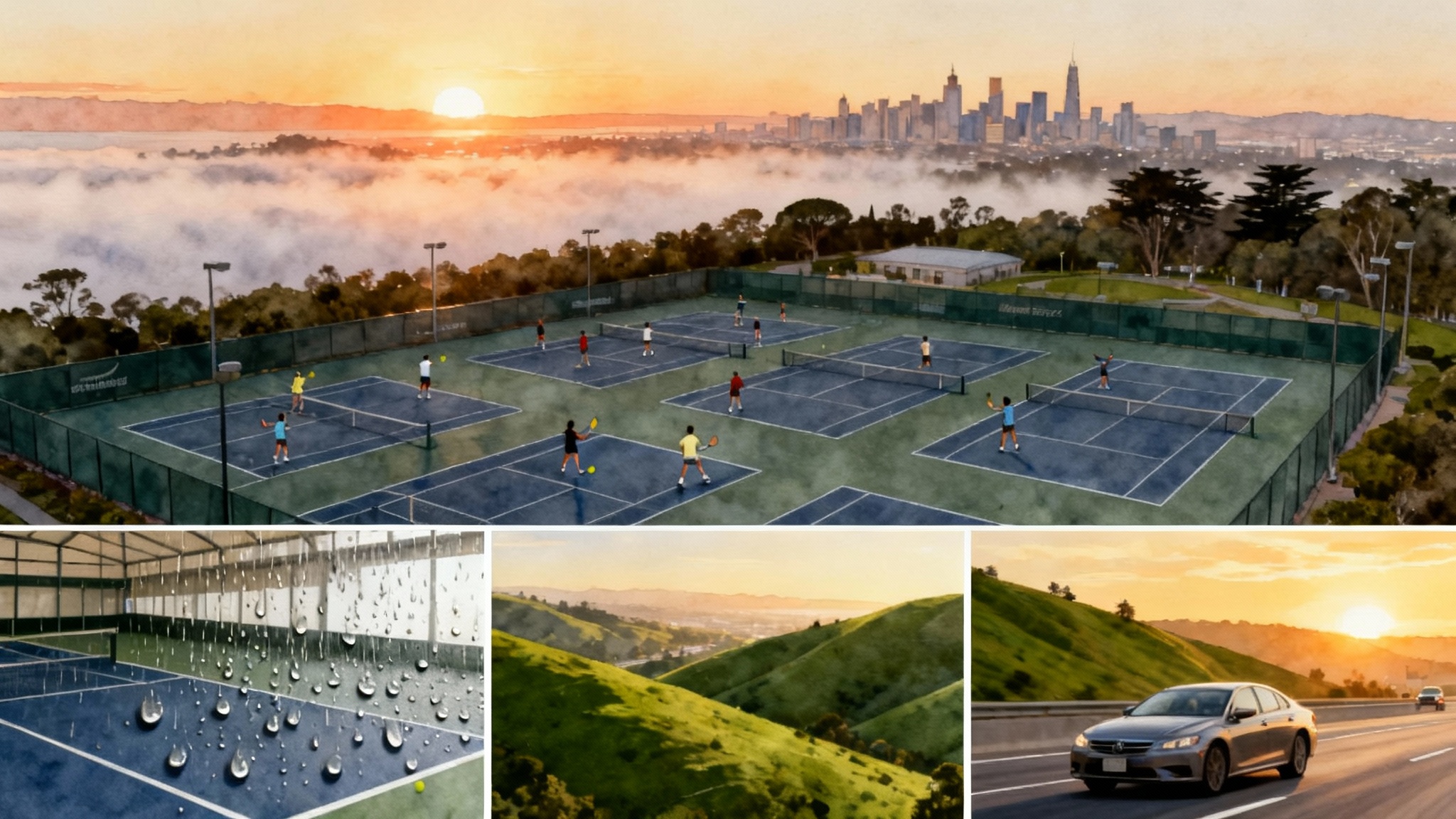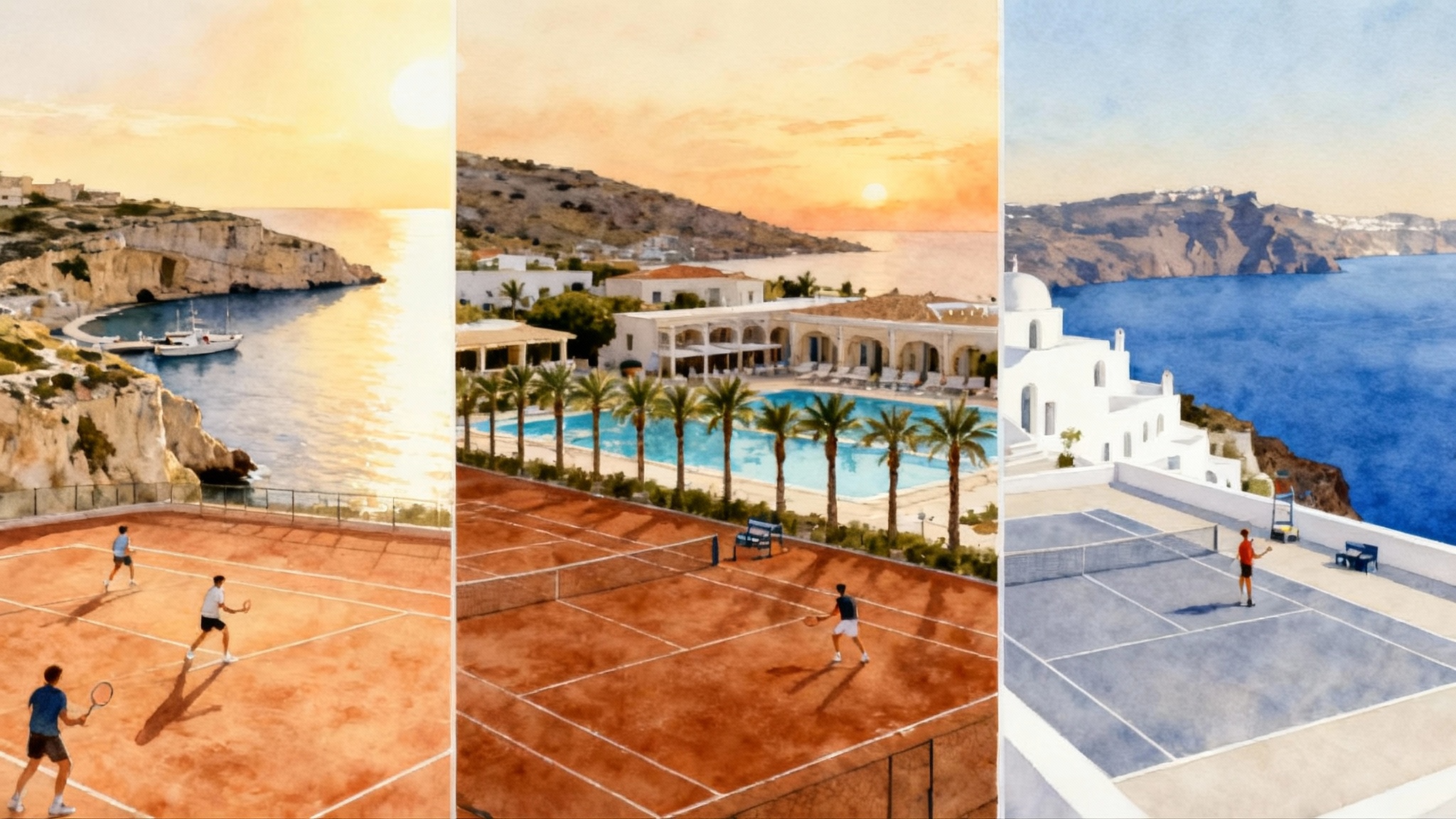Gulf Coast Tennis Academies 2025–2026: Sarasota, Tampa & Naples
A parent-focused guide to junior tennis academies on Florida’s Gulf Coast. Compare training models, surfaces, coaching ratios, Universal Tennis Rating match play, college support, pricing, and travel, with a deep dive on Sarasota’s Celsius.
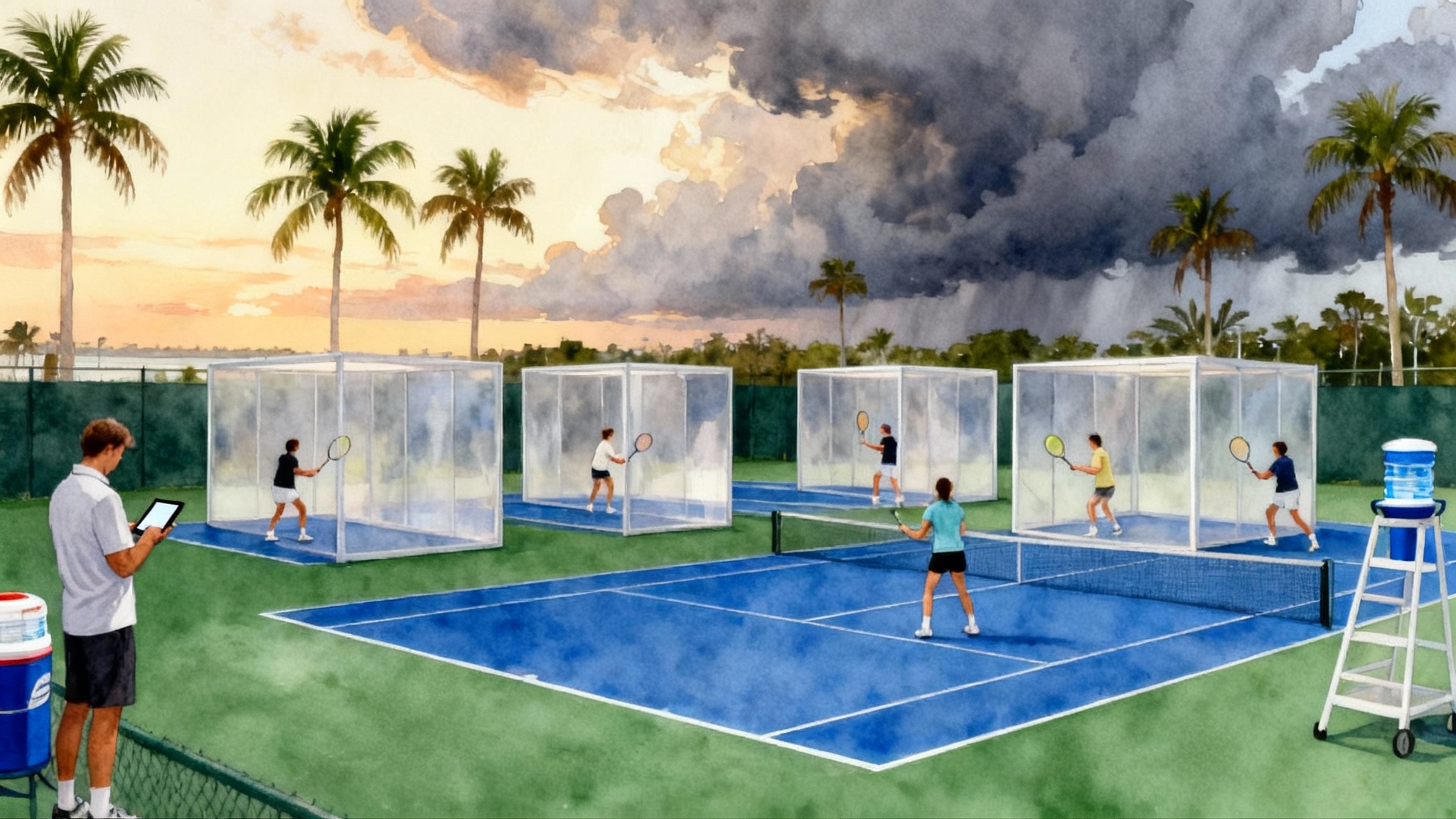
How to choose a Gulf Coast academy in 2025–2026
If you are comparing junior tennis academies along Florida’s Gulf Coast, you are balancing multiple levers at once: the daily training model, clay versus hard-court access, coaching ratios, verified Universal Tennis Rating match play, college placement support, travel time to tournaments, and the budget. This guide walks you through those levers with a parent-first lens. We frame the big tradeoffs, then dive deep on Celsius Tennis Academy in Sarasota and highlight notable options in Tampa and Naples.
Think of your decision like choosing the right school with a sport layered in. Courts are classrooms. Coaches are teachers. Match volume is homework. Tournaments are exams. The best choice is the program whose school day fits your child’s goals and your family’s logistics.
Training models: what a day actually looks like
Academies arrange their day in a few common formats. Ask to see the live schedule for the month you plan to start, since weather, daylight, and school year timing shift the blocks.
- After-school high performance: two to three hours of on-court drills and point play on weekdays, with fitness before or after. Weekend Universal Tennis Rating sets or USTA events.
- Full-time day program: morning technical work, midday fitness and recovery, afternoon patterns and points. Often paired with virtual or flexible schooling.
- Tournament prep intensives: short blocks before a key tournament swing. Emphasis on serve patterns, returns, first-ball plus-one, tie-break rehearsals, and match plans.
What to look for in the hour-by-hour flow:
- Progression within the session: warmup, footwork, live-ball drills, serve plus one, situational points, sets. A healthy ratio of decision-making reps to closed drills.
- Video feedback cadence: short clips immediately after a rep help the brain connect feel and result.
- Fitness that fits tennis: lateral speed, deceleration, hip stability, shoulder care. Not just generic conditioning.
Clay versus hard courts: why surface matters on the Gulf Coast
Florida’s Gulf Coast has abundant green clay, often called Har-Tru, plus standard hard courts. Each shapes a player differently.
- Clay builds patience, balance, and defensive skill. Players learn to slide, defend, and build points. It is kinder to joints during growth spurts.
- Hard courts sharpen first-strike patterns and court positioning for faster points. They reward serve accuracy, return aggression, and depth control.
The ideal week blends both. For developing players, two to three days on clay and two to three on hard courts balances durability with speed of play. If an academy has only one surface, ask how they simulate the other through constraints and scoring.
Coaching ratios and group construction
Ratios change the learning tempo. On court, a 1:4 to 1:6 coach-to-player ratio is common for advanced groups. Anything beyond 1:8 on live ball begins to reduce quality unless there are assistant pros or use of split courts. For fitness, 1:8 to 1:12 is workable when sessions are scripted and supervised. More important than the raw ratio is how groups are formed. Good academies create pods by level and movement quality, not just age. You want your child hitting the ball they are chasing, not feeding every other rep to someone far off their level.
Verified match play and Universal Tennis Rating
Universal Tennis Rating, often shortened after definition to UTR, places players on a common scale based on verified matches. Ratings move when your child plays verified sets, not just when they drill. Look for weekly match play baked into the program. A solid target for aspiring tournament players is two verified singles matches per week plus one day of pressure doubles. Over a season this builds enough data for a stable UTR and gives coaches a realistic view of progress.
College placement support
For families with college tennis in view, placement support is more than a list of coach emails. Strong programs help with:
- Video: highlight reels that show full points, not only winners, and a few unedited games from both sides.
- School list strategy: building a ladder of target, reach, and anchor programs based on academics, level, and scholarship reality.
- Communication: email templates, timelines, and call prep. Coaches value concise updates with recent verified results.
- Planning: tournament schedule that shows level progression and consistent performance, not just a scatter of events.
Pricing and what the monthly budget really looks like
Tuition varies by city and program features. The ranges below reflect typical Gulf Coast pricing as families reported for the last two seasons. Always confirm current rates when you tour.
- After-school high performance day program: roughly 700 to 1,500 dollars per month depending on days per week, surface access, and fitness.
- Full-time day program without boarding: roughly 1,500 to 3,000 dollars per month including fitness and match play blocks.
- Boarding models: roughly 3,500 to 6,500 dollars per month including housing and meals.
- Private lessons: roughly 80 to 150 dollars per hour depending on seniority.
- Tournament costs per event: entry fees 60 to 90 dollars, UTR events 35 to 50 dollars, stringing 20 to 40 dollars plus string, travel and hotels vary by venue.
A realistic monthly budget for a tournament-active player in a day program often lands near 1,800 to 2,800 dollars when you add tuition, two private lessons, stringing, and two weekend events within driving distance.
Travel to tournaments on the Gulf Coast
Your calendar will likely mix Universal Tennis events and USTA Florida tournaments. From Sarasota, you can reach Bradenton in about 30 minutes, St. Petersburg or Tampa in about 60 to 75 minutes, and Naples in about 90 to 120 minutes depending on traffic. From Tampa or Wesley Chapel, Sarasota is about 60 to 80 minutes, and Orlando is about two to two and a half hours. From Naples, Fort Myers is about 45 to 60 minutes, Sarasota about two hours, and Miami about two to two and a half hours. Many families treat weekend tournament travel like a school field trip: leave Friday afternoon, play Saturday and Sunday, and be home by Sunday night if the draw allows.
If you are also considering a Southeastern hub beyond Florida, compare options in Best Atlanta Tennis Academies 2025–2026.
Deep dive: Celsius Tennis Academy, Sarasota
Celsius Tennis Academy in Sarasota serves Sarasota-based juniors who want a high-repetition, match-play-forward approach without losing technical detail. The program is known for organizing level-based groups, building a weekly flow that ends with pressure points, and tracking progress through verified play. Families often highlight how coaches balance tempo and care: sessions stay brisk, but each player gets a few precise interventions per hour that stick.
Facility and surfaces: Sarasota offers a mix of hard and green clay courts across area clubs, and Celsius integrates both to develop first-strike skills and defensive competence. Parents should ask for the current mix of surfaces by day since court allocations shift with season and daylight.
Coaching and ratios: Expect small pods within larger groups. The target on-court ratio is usually in the 1:4 to 1:6 range during advanced drilling, with assistants stepping in during live-ball segments to keep reps high. Fitness blocks emphasize deceleration strength, single-leg stability, and shoulder care, an important trio for players ramping tournament volume.
UTR match play: Celsius builds verified sets into the week and helps families map a tournament plan that keeps the rating both stable and trending. The staff encourages players to rehearse patterns in live scoring days, such as serving out of trouble at 30–30 or playing crosscourt heavy at love–30. Doubles is not an afterthought. The program runs doubles days to cover returns through the middle, poach cues, and first volley depth.
College pathway: For players with college goals, Celsius supports video capture on ordinary training days so highlights look like real tennis rather than a staged shoot. The staff guides families on a school list that fits level and academics, and they encourage honest email updates that link to verified match results.
A sample Celsius week for a tournament-focused player in the school year:
- Monday: warmup and mobility, crosscourt depth under pressure, serve plus one targets, live-ball patterns, 30 minutes of sets, shoulder care.
- Tuesday: movement patterns on clay, neutral ball height control, approach and net coverage, match play tiebreaks, lower-body strength.
- Wednesday: return plus one from both sides, short-ball decision training, pattern games, sets to six, recovery and video review.
- Thursday: serve locations and second-serve aggression, heavy forehand building, doubles poach and signals, pressure points, core and hips.
- Friday: mixed-surface day, situational games starting at 30–30, timed sets, speed work and jumps, stretch.
- Saturday: optional UTR event or set play and serve practice.
- Sunday: tournament day or rest and mobility.
Parent takeaways when touring Celsius:
- Watch for the coaching cue style: look for short, specific cues instead of long lectures. A cue like “load earlier, head still through contact” usually outperforms a three-minute speech while keeping the session moving.
- Ask how they handle Florida’s afternoon storms: most Gulf Coast programs use indoor space for fitness and video when lightning sirens halt play. You want a clear plan for rainy season months.
- Confirm the set count your child will log each week: ratings change with verified play, so process and volume must align with your goals.
Notable Tampa option: Saddlebrook
In the Tampa area, Saddlebrook in Wesley Chapel remains a well-known choice for serious juniors who want an immersive environment with boarding as an option. The program pairs morning and afternoon training blocks with access to both clay and hard courts, and it serves a wide level range by creating pods. Families like the on-site setup that reduces daily commute time. Ask about:
- Boarding oversight and study support if your player is on a flexible school plan.
- How groups are formed on your player’s start date. With a large academy, daily pod quality matters more than the overall brand name.
- Match play frequency and whether UTR events are hosted on site during the school year.
Notable Naples option: Emilio Sanchez Academy
Naples hosts the Emilio Sanchez Academy, a program known for a technical base with Spanish clay-court DNA layered into modern first-strike patterns. Families report a strong rhythm of drilling into points, plus a clear doubles framework. When you visit, ask to see a full session from warmup to pressure games. Confirm how many clay versus hard-court hours your player will get weekly and how verified match sets are scheduled. For a Spain-based comparison of systems, see the Emilio Sanchez vs Ciudad guide.
Sample weekly plans by age and stage
These examples show what a balanced week can look like. Use them to compare offers.
Ages 10 to 12, tournament curious:
- Monday: 90 minutes of skill games on hard, 30 minutes of serve practice, 20 minutes of tennis-specific agility.
- Tuesday: 90 minutes of clay rally tolerance games, 30 minutes of approach and volley, 20 minutes of shoulder care.
- Thursday: 90 minutes of pattern games, 30 minutes of returns, short race-to-four sets.
- Saturday: orange or green ball event or low-pressure UTR play day.
Ages 13 to 15, tournament active:
- Monday: 2 hours of hard-court live ball, serve plus one, sets to four, lower body strength.
- Tuesday: clay-court height control, neutral ball patience, timed sets, mobility.
- Wednesday: return day with crosscourt patterns, pressure tie-breaks, shoulder strength.
- Friday: mixed-surface points, doubles systems, speed work.
- Weekend: one UTR or USTA event and one recovery day.
Ages 16 to 18, college focused:
- Monday: serve location charting, first four-ball patterns, sets to six, video capture.
- Tuesday: clay defense to offense, approach and transition, gym strength.
- Wednesday: return aggression and plus one neutralization, singles sets, recovery and film review.
- Thursday: doubles roles and formations, live return plus poach, contrast sets on hard.
- Friday: pressure ladders, 30–30 starts, tie-break factory, mobility.
- Weekend: tournament or showcase event, email update to college coaches with verified results.
Tryout day checklist for parents
Bring this with you and observe quietly from the fence so the staff can run the session.
- Watch ball quality: height, depth, and tempo in the group your child would join.
- Count coach interventions per player per hour: at least three short, targeted cues is a healthy rate.
- Scan the ratio and spacing: are players waiting or hitting most of the time.
- Note the progression: warmup to live ball to points to sets.
- Ask for a written plan for the first four weeks, including how match play will be verified.
- Confirm the rain and lightning policy, and what happens during stoppages.
- Check the stringing turnaround and recommended string setup for your child’s level.
- Verify academic support options if you plan a full-time schedule.
Key questions to ask on tours
- How are groups formed and reformed as players improve.
- What is the weekly split of clay and hard courts for my child’s group.
- How many verified singles sets will my child play each week, and on which days.
- What is the on-court ratio at my child’s level during live ball and during sets.
- Who runs fitness, and what is the progression for strength and shoulder care.
- What is the plan for the first tournament block, and which local events fit my child’s current level.
- How will you communicate progress: video, notes, or a player journal.
- What specific help do you provide for college placement.
- What is the add-on cost structure for private lessons and tournament coaching.
Weather, heat, and scheduling reality
From late May through September, afternoon heat and storms are part of the Gulf Coast rhythm. Strong programs shift heavy drilling earlier in the day or under shade, use more clay time to spare joints, and run indoor fitness or video review when lightning sirens sound. Hydration, ice towels, and scheduled shade breaks are not extras, they are core to safe training. In winter months, light winds and low humidity create premium practice windows. Build your tournament calendar accordingly: stack local events in fall and winter, keep summer travel flexible, and prioritize recovery weeks after multi-day events.
Putting the pieces together
- Define the end in mind: college tennis, state titles, or steady improvement. Goals drive the right model.
- Choose surface balance: a two to three clay and two to three hard split builds a complete game.
- Lock in match play: two verified singles matches per week for competitive players keeps UTR honest.
- Protect the body: fitness and shoulder care are investments, not add-ons.
- Budget the whole month: tuition plus lessons plus tournaments gives the real number.
- Simplify logistics: pick an academy whose daily drive and weekend travel you can sustain.
Final take
Sarasota’s Celsius offers a focused, match-play-forward environment with a healthy surface mix and precise coaching. Tampa’s Saddlebrook brings scale and on-site convenience if you want an immersive setting. Naples’ Emilio Sanchez Academy provides a technical clay-informed base that still respects first-strike tennis. Visit, watch full sessions, and line up the daily schedule with your child’s goals. The best program is the one that makes strong practice your family’s easiest routine, week after week, season after season.
